The number of hard drives a PC can have depends upon two factors.
- Firstly, it relies on the hard drive you wish to install, i.e., Hard Disk Drive or SSD.
- Secondly, it depends on your motherboard’s expansion capability, i.e., ports and slots.
As such, there is no maximum number of hard drives a PC can have. It all depends on slot availability.
Hard disk drives require SATA slots, and SSDs need SATA or M.2 slots, depending on what type of SSD you have.
A typical motherboard has 4-8 SATA ports and 1-2 M.2 slots. This means 4-8 SATA hard drives and 1-2 SSDs conforming to the M.2 form factor, giving you a combined total of about 5-10 hard drives.
But in addition to that, you can also increase the number of SATA or M.2 slots using PCIe slot expansion cards. These are specialized cards that plug into the PCIe slots on your motherboard. Therefore, depending upon how many PCIe slots a motherboard has, a PC can have far more than 6-8 hard drives if using the port expansion cards.
In the following text, I will discuss how many hard drives a PC can have and how to add more.
TABLE OF CONTENTS
SATA and PCIe Hard Drives
Before we go into how many hard drives a PC can have, I’d like to discuss the type of hard drives you can install briefly.
There are two interfaces that you can use to add hard drives:
- SATA: The slower interface
- PCIe: Much Faster interface
SATA Drives and Ports
SATA hard drives connect to the SATA ports on your motherboard.
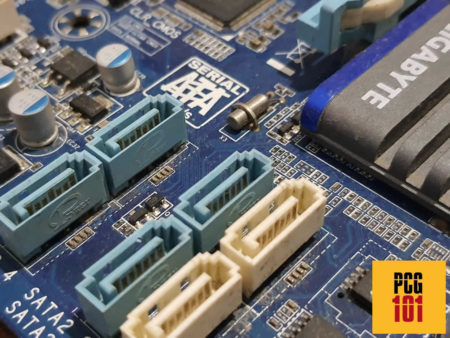
There are three types of SATA hard drives:
- Hard Disk drives
- 2.5″ SATA SSD drives
- M.2 SATA SSD
The hard disk drives are your typical large 3.5″ and 2.5″ drives with magnetic plates for storage. These can reach maximum transfer speeds of about 200 MB/s at best.
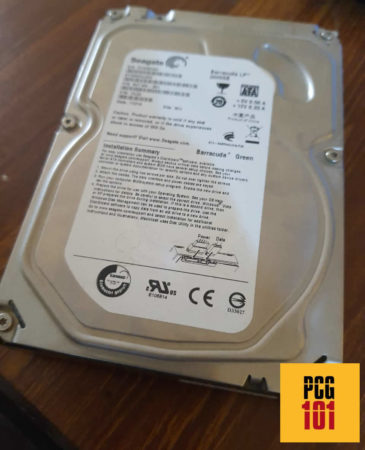
The 2.5″ SATA SSD drives are solid-state drives connecting to your motherboard’s SATA port. These can reach sustained speeds of about 550 MB/s max.
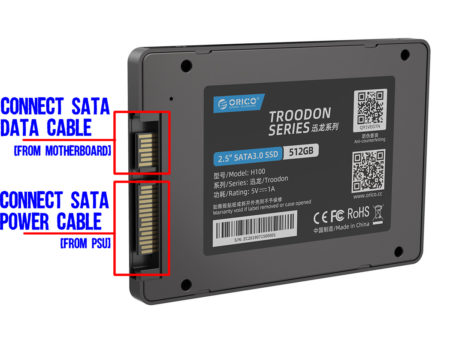
Each SATA hard drive connects to an individual SATA port on your motherboard. You cannot connect two SATA drives to a single SATA port on your motherboard.
The third type of SATA hard drive is the M.2 SATA SSD. These SSDs have the M.2 form factor but utilize the SATA interface. They also reach a maximum of 550 MB/s transfer speeds.
M.2 SATA SSDs plug into an M.2 slot.

PCIe Based on Hard Drives
The second interface for connecting hard drives is the much faster PCIe interface.
Only one type of commercial hard drive uses the PCIe interface, the PCIe NVMe SSDs.
PCIe NVMe SSDs use the M.2 form factor. However, compared to the M.2 SATA SSDs, they are multiple folds faster. A Gen 3 NVMe SSD can reach speeds of 3500 MB/s per second. A Gen 4 NVMe SSD can get about 6500-7000 MB/s!

These drives CANNOT be inserted directly into the PCIe slots. They require M.2 slots that conform to the correct PCIe version, i.e., version 3.0 for Gen 3 SSDs and version 4.0 for Gen 4 SSDs.
Read in Detail: What is the Difference Between SATA and SSD and HDD and NVMe?
The critical point to note from this section is that when answering the question, “how many hard drives can a PC have?” you must consider what type of hard drives you wish to add.
So How Many Hard Drives Can a PC Have?
Again that depends upon whether the hard drive in question is Hard Disk Drives, 2.5″ SSDs, or M.2 SSD.
Typically, the exact answer to the question depends on your motherboard.
A budget motherboard with an mATX form factor has about 4 x SATA ports and 1 x M.2 slot (i.e., ASUS H610M S2 DDR4). Hence this PC can have 5 x hard drives, i.e., 4 x SATA HDD/SSD and 1 x M.2 SSD.
A mid-range motherboard with mATX or ATX form factor has about 6 x SATA Ports and 2 x M.2 slots (i.e., ASUS TUF Gaming B550-PLUS). Hence this PC can have 8 x hard drives.
A high-end motherboard with ATX form factor has about 8 x SATA ports and 2-4 M.2 slots (i.e., ASUS TUF Gaming X570-Plus). Hence, this PC can have up to 12 x hard drives.
The best way to determine how many hard drives your PC can have is through its spec sheet.
Take, for instance, the storage spec sheet for the ASUS TuF Gaming X570-Plus below:
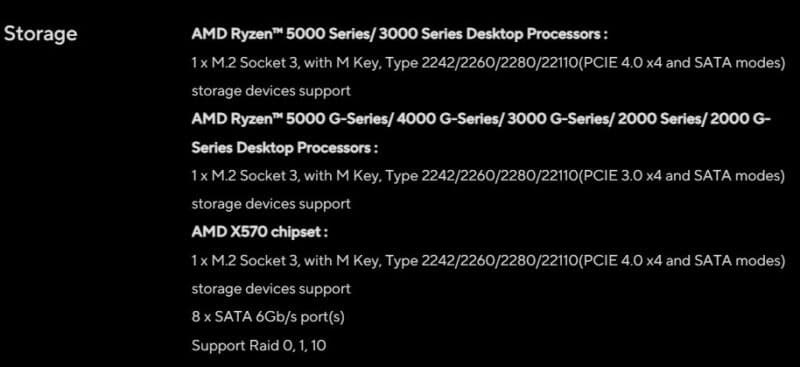
This spec sheet shows that this motherboard offers 8 x SATA Ports and two M.2 slots – one powered from the CPU and the other from the AMD X570 Chipset.
So that you know, the first M.2 slot will only support Gen 4 NVMe SSDs IF the CPU you have is from the Ryzen 5000 or the 3000 non-G series. Otherwise, it will conform to the PCIe 3.0 version and support Gen 3 NVMe SSDs.
In addition to that, both the M.2 slots support both SATA and NVMe M.2 SSDs.
As such, we can conclude that the motherboard above can support the following:
- 8 x SATA hard drives connecting to the SATA ports
- 2 x M.2 hard drives
You can also figure out the number of hard drives your PC can have by manually counting the number of SATA ports and the M.2 slots on your motherboard.
However, I’d like to point out that sometimes a SATA port shares bandwidth with an M.2 slot. Hence populating one disables the other. This can only be figured out through the spec sheet.
It should be noted that optical drives, such as DVD drives, also use the SATA interface and connect to the SATA port. Hence, adding an optical drive to your PC will reduce the number of SATA hard drives you can have by one.
You Can Increase the Number of SATA and M.2 Slots By Adding More PCIe Slots
If you have run out of SATA ports for your hard disk drives or M.2 slots for your SSDs, you can add more using the PCIe expansion slots.
What are PCIe Slots?
PCIe slots are the long rail-like slots that all commercial motherboards have. These are used to add more capability to your PC. For instance, you can add an advanced graphics card, a specialized sound card, a WiFi card, etc.
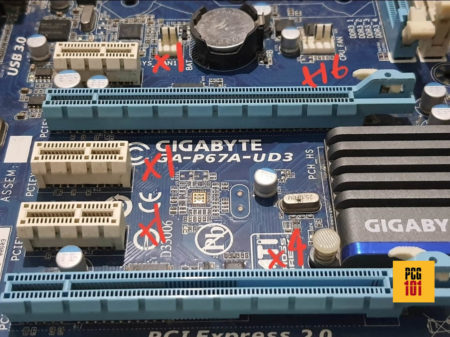
To add more hard drives to your PC, you can use these PCIe slots to install port expansion cards.
Different sizes of PCIe slots are differentiated by the number of PCIe lanes they have. The higher the number of PCIe lanes, the larger the expansion card a slot can be occupied with.
So, a small x1 slot with one lane can add an expansion card with 2-4 additional SATA ports. An x4 slot can add ten or more SATA ports to your PC.
SATA and M.2 Expansion Cards
The following is a typical SATA port expansion card. This is a cheap and effective method to increase the number of SATA ports you have.
As you can see, it has an x1 connector and thus fits into an x1 slot. It provides an additional 4 x SATA ports to your PC, which you can use to add four other SATA hard drives.
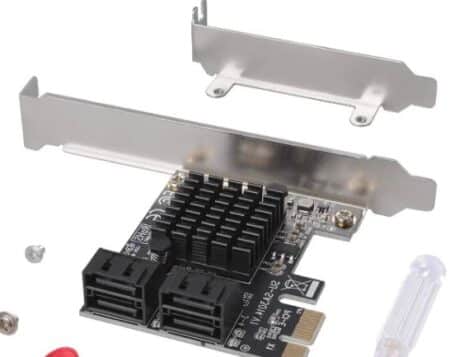
Read in detail: How to add more SATA Ports to the motherboard?
Similarly, you have M.2 slot expansion card. Note that while a SATA M.2 SSD can work using a single PCIe lane, an NVMe SSDs requires four PCIe lanes.
Hence an extra M.2 slot expansion card for NVMe SSDs requires an expansion card with an x4 connector and at least an x4 PCIe slot.
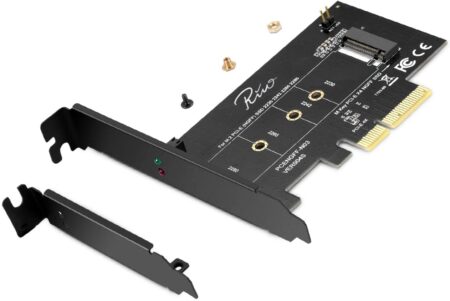
Also Read in Detail: How to Add More M.2 SSD Slots?
Final Words
The answer to the question of how many hard drives a PC can have depends on your motherboard. To be precise, it is determined by the number of SATA and the M.2 slots you have on your motherboard.
Typically you can have 4-8 SATA ports and 2 x M.2 slots on an average motherboard. A budget motherboard has 4 SATA ports and 1 x M.2 slot, whereas a high-end motherboard can feature 8 SATA ports and 2-4 M.2 slots.
Each SATA HDD and SSD, and NVMe SSD requires an individual slot. In other words, one SATA or M.2 slot on a motherboard cannot add two drives.
You can add more SATA and M.2 slots to your motherboard using the PCIe slots for adding slot expansion cards.
Frequently Asked Questions
1. What are the benefits of having multiple hard drives in a PC?
Having multiple hard drives in a PC can provide several benefits. For example, it can increase the storage capacity of the computer, improve performance by allowing data to be stored and retrieved from multiple drives simultaneously, and provide redundancy in case of hard drive failure.
2. How can you add additional hard drives to a PC?
You can add additional hard drives to a PC by installing them into available drive bays in the computer case and connecting them to the motherboard using SATA cables. Some computers may require additional power cables or adapters to support multiple hard drives.
3. How can you configure multiple hard drives for optimal performance and storage capacity?
To configure multiple hard drives for optimal performance and storage capacity, you can use a RAID (Redundant Array of Independent Disks) configuration.
RAID allows data to be distributed across multiple drives, improving performance and providing redundancy in case of drive failure.
There are several different RAID levels available, each with its own benefits and drawbacks.
4. Can you mix and match different types of hard drives in a PC?
It is possible to mix and match different types of hard drives in a PC, but doing so may result in reduced performance and compatibility issues.
For best results, it is recommended to use identical hard drives of the same model and capacity.
If different types of hard drives must be used, it is important to ensure that they are compatible and can be configured properly.
5. What are some best practices for managing multiple hard drives in a PC?
To manage multiple hard drives in a PC, it is important to keep them organized and labeled.
This can help you keep track of which drive contains which data and prevent accidental data loss.
It is also important to regularly backup important data to prevent loss in case of drive failure.
Additionally, monitoring the health of the hard drives using diagnostic software can help you identify and address issues before they cause data loss.
